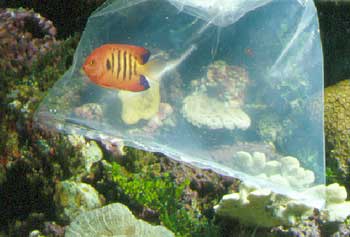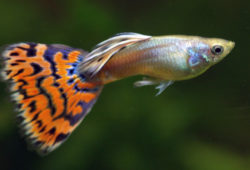Stuff you need to know about adding new fish
In the article I’ll tell you about Stuff you need to know about adding new fish. Adding new fish to your tank without proper acclimatisation can result in shock due to a sudden change in water chemistry.

This could lead to an outbreak of whitespot or even death. There are a number of methods of safely introducing fish to the new conditions.
Slowly, slowly…
A method I used for over 40 years involves introducing new fish at night (or the tank lights can be turned off) so they can adjust when the other fish are resting. This keeps territorial disputes to a minimum.
I float the bag for 20-30 minutes in the dark. Depending on the hardiness of the fish, I open the bag and add a cupful of water from the tank every 10 minutes or so. I slow the rate to every 30 minutes for livebearers and Danios, and increase it to two hours for Cardinals. Once this is complete, release the fish into the tank so they can adapt.
Some people use the same approach, but net the fish out of the bag and throw the water in the bag away, due to the possibility that the water in the shop has been treated with chemicals or antibiotics to keep disease under control and that these could damage the delicate balance of your filter.
But in my opinion, the amount of water in a fish bag is tiny when compared to the volume of most tanks, and trying to net the fish can prove very stressful to the fish.
Besides, if the shop’s water is so full of chemicals, should you be buying your fish from there at all? If you buy them from a reputable retailer, you shouldn’t have to worry about what’s in their water.
Another approach is to acclimatise the fish to the new temperature and then release them into the tank without adding any of your own tank water.
This school of thought believes adding tank water to the bag is insignificant in reducing stress through chemical shock, and that netting fish causes even more stress.
Besides, they argue that fish should be chosen to meet your local water requirements, and therefore chemical stress is kept to a minimum.
I disagree with this method. Some shops that import from the Far East add salts to their systems to match the water conditions of the Far East. Your tank water will not be the same and your fish need time to adjust to the new chemistry.
(Ed’s note: If your tank has been set up for some time, or contains large pieces of bogwood, or has CO2 added, the pH may well be lower. The pH scale is logarithmic, so a pH of 8.0 is ten times more alkaline than a pH of 7.0. So what may seem a fairly small change on the pH scale to us is different to the fish.)
A method used by PFK staff, particularly with sensitive species, is to release the fish with the water from the bag into a bucket or other container into which water from the aquarium is slowly dripped using an airline.
This can take a number of hours, but the fish are acclimatised to your water very slowly. They can then be transferred to the main aquarium.
There is another way, however…
I recently had an idea that has altered the way I acclimatise my fish. Think of it as a kind of fish elevator, but one that only goes down.
Next time you buy prepacked meat in rigid plastic trays from your supermarket, wash and keep the container. It is perfect for aquarium use as it is non-toxic, strong and durable. And they come in a variety of sizes, up to 4 l., so you’ll find one for whatever size of fish you have.
Pierce a tiny hole in the centre of the container base, then gently pour some of the water from the bag along with the fish into the container so it’s about a quarter full.
Place it in the tank where it will float for a while on the water surface. To increase stability, I place eight small magnets in pairs at the corners.
Water finds its own level, and the container will slowly fill and sink
– the speed at which this occurs depends on the size of the hole. If your container has a rim, ensure you pierce holes here otherwise air will get trapped to form a floating collar and it won’t sink.
For those who prefer not to add the bagged water to their tank, you can always net the fish out now.
You should turn the lights off or carry out the procedure overnight.
With nervous fish such as Hatchets or Silver sharks, add floating plants such as Riccia to help reduce stress.
If introducing more than one bag of new fish, use more containers.
Spare a thought for your plants, too!
Believe it or not, you should take the same care to reduce stress when introducing plants. Cryptocoryne wilt is often a symptom of a plant that is stressed by changes in water chemistry rather than disease.
To avoid such problems, float your plants for a couple of days on the surface of the tank first. Cuttings treated this way will also grow roots, and your chances of success are greatly increased.
As you would not put soft water fish into hard water, you should not do the same with plants. Fortunately, most plants will tolerate hard water, but some hard water plants, like Vallis, fall to bits in soft water.
This article was first published in the January 2005 issue of the Practical Fishkeeping Magazine.



